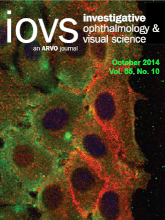Abstract
PURPOSE: High concentrations of unconjugated bilirubin are neurotoxic and cause brain damage in newborn infants. However, the exact level of bilirubin that may be neurotoxic in a given infant is unknown. The aim of this study was to use a quantitative measure of neural activity, the swept parameter visual evoked potential (sVEP) to determine the relationship between neonatal bilirubin levels and visual responsivity several months later.
METHODS: We compared sVEP response functions over a wide range of contrast, spatial frequency, and Vernier offset sizes in 16 full-term infants with high bilirubin levels (>10 mg/dL) and 18 age-matched infants with no visible neonatal jaundice, all enrolled at 14 to 22 weeks of age. The group means of sVEP thresholds and suprathreshold response amplitudes were compared. The correlation between individual sVEP thresholds and bilirubin levels in jaundiced infants was studied.
RESULTS: Infants who had a history of neonatal jaundice showed lower response amplitudes (P < 0.05) and worse or immeasurable sVEP thresholds compared with control infants for all three measures (P < 0.05). Swept parameter visual evoked potential thresholds for Vernier offset were correlated with bilirubin level (P < 0.05), but spatial acuity and contrast sensitivity measures in the infants with neonatal jaundice were not (P > 0.05).
CONCLUSIONS: These results indicate that elevated neonatal bilirubin levels affect measures of visual function in infancy up to at least 14 to 22 weeks of postnatal age.
Free PMC article. PMCID: PMC4197714

